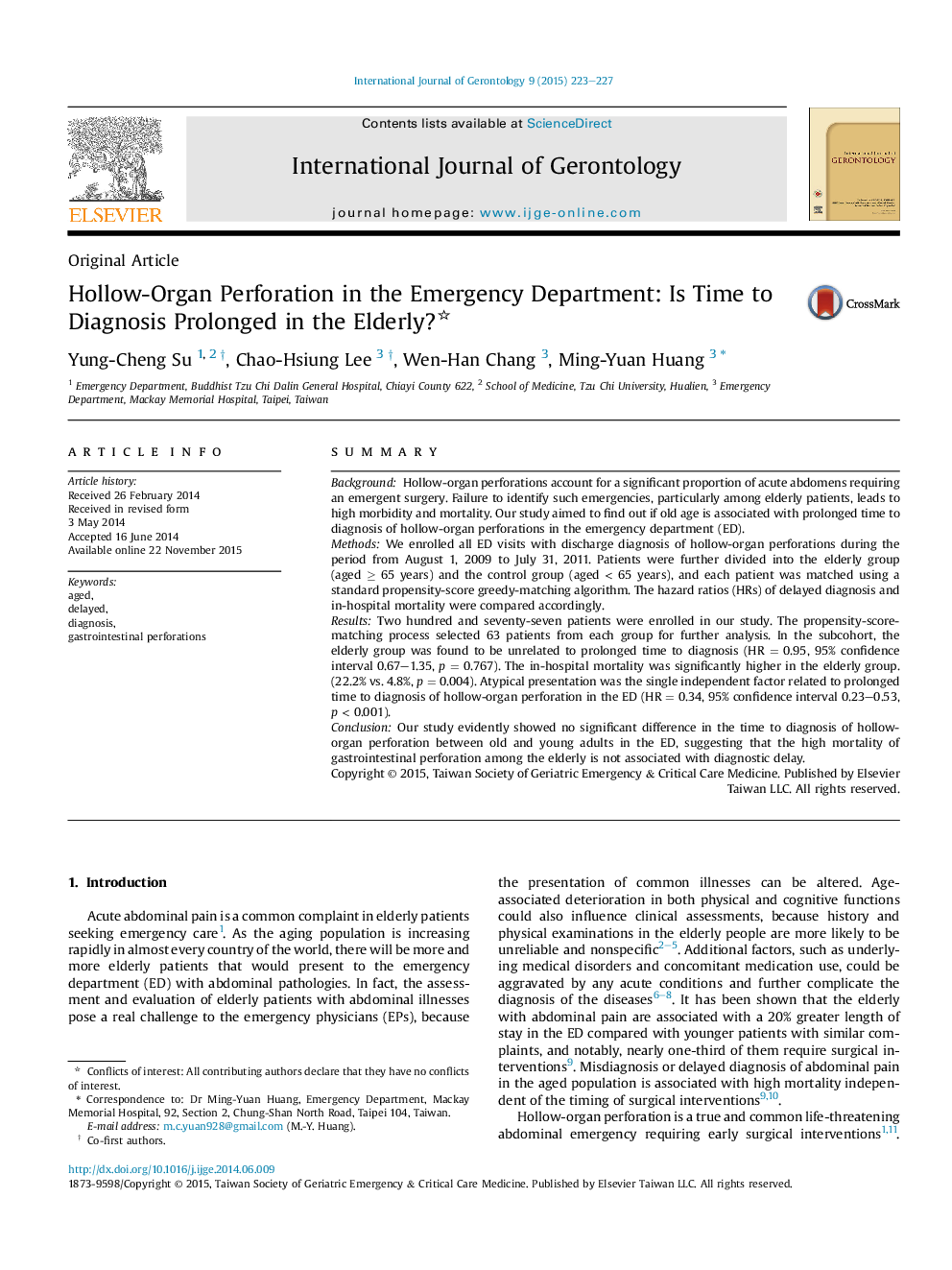| Article ID | Journal | Published Year | Pages | File Type |
|---|---|---|---|---|
| 3325113 | International Journal of Gerontology | 2015 | 5 Pages |
SummaryBackgroundHollow-organ perforations account for a significant proportion of acute abdomens requiring an emergent surgery. Failure to identify such emergencies, particularly among elderly patients, leads to high morbidity and mortality. Our study aimed to find out if old age is associated with prolonged time to diagnosis of hollow-organ perforations in the emergency department (ED).MethodsWe enrolled all ED visits with discharge diagnosis of hollow-organ perforations during the period from August 1, 2009 to July 31, 2011. Patients were further divided into the elderly group (aged ≥ 65 years) and the control group (aged < 65 years), and each patient was matched using a standard propensity-score greedy-matching algorithm. The hazard ratios (HRs) of delayed diagnosis and in-hospital mortality were compared accordingly.ResultsTwo hundred and seventy-seven patients were enrolled in our study. The propensity-score-matching process selected 63 patients from each group for further analysis. In the subcohort, the elderly group was found to be unrelated to prolonged time to diagnosis (HR = 0.95, 95% confidence interval 0.67–1.35, p = 0.767). The in-hospital mortality was significantly higher in the elderly group. (22.2% vs. 4.8%, p = 0.004). Atypical presentation was the single independent factor related to prolonged time to diagnosis of hollow-organ perforation in the ED (HR = 0.34, 95% confidence interval 0.23–0.53, p < 0.001).ConclusionOur study evidently showed no significant difference in the time to diagnosis of hollow-organ perforation between old and young adults in the ED, suggesting that the high mortality of gastrointestinal perforation among the elderly is not associated with diagnostic delay.
